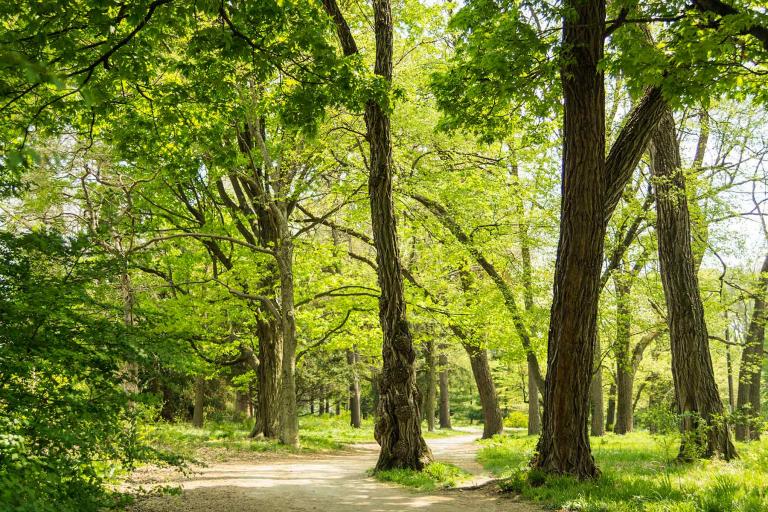- Annual aerification reduces compaction and allows air and water to get to grass roots, preventing the growth of weeds.
- Maintained turf areas are annually over-seeded with approximately 4500 lbs of Kentucky Blue Grass/Perennial Rye mix.
- Filling in bare spots and sparse turf areas helps grass compete against weeds.
- Soil tests are performed every two years to measure pH, organic matter, and nutrients/soil fertility.
Grounds Maintenance
Grounds and Arboretum preserves, protects, and beautifies the College natural environment in balance with the health and well-being of residents and visitors to campus.

Maintenance Strategies
The College engages in grounds maintenance in three distinct areas: trees, beds, and grass. In each setting, our staff follow carefully honed protocols designed to minimize the use of chemicals and instead emphasize natural management techniques. When supplemental care is warranted, we acquire the safest products available, use minimal amounts, and fully disclose all information about our chemical usage. In all aspects of our grounds maintenance, we endeavor to exceed what is required by government agencies, and we do.
Trees and Beds
Our overarching goal is to effectively care for the diverse collection of mature, young and historic trees while protecting the environment in which community members work and live. As we have such a mature and historic collection of trees, care and monitoring helps reduce the risks (due to falling limbs) and cost of maintaining these treasured assets.
Our integrated pest management (IPM) approach enables us to reduce dependency on, and the amount of, chemicals regulated by the EPA. IPM is a comprehensive program for pest control which combines multiple management strategies, including biological, cultural, use of indigenous plants, and chemicals with lower toxicity to humans. Through this approach, we have eliminated our use of chemicals applied to trees with powerful ‘Warning’ or higher level categories, and only use those which carry the lowest-level designation of ‘Caution’. Review the NPIC fact sheet to learn more. Such chemicals are applied in highly targeted methods – such as direct injection – to minimize broad exposure to airborne agents.
Plant bed maintenance (including tree rings) revolves around a zero-tolerance approach to weeds. Pre- and post-emergent weed control is used as little as possible. Weeds that do appear are selectively sprayed, and blanket weed spraying is never conducted under any circumstances.
Grass
Our aggressive turf management program only incorporates chemicals as a last resort.

Notification
As required by state law, individuals on the Pesticide Sensitivity List are contacted at least 12 hours in advance. Notification is required when making applications within 500 feet of any individual in the PA Pesticide Hypersensitivity Registry.
In addition, a full day’s notice is given to all Haverford College Community members providing the following information:
-
- Date of application
- Location
- Start and end times
- Brand names of chemical
- EPA Registration number
- Active ingredient
- Application rate
- Contact information
-
- Contact information and Business License Number (BU-7718)
- LD50 is included on each notice, which is a measure of toxicity. An explanation of LD50 is provided in this University of Florida article. The higher the LD50 number, the less toxic the chemical.
Guidelines and Regulations
The EPA heavily regulates pesticide use and has applied strict safety standards for use and exposure to pesticides. Haverford College carefully adheres to these standards, and has conducted and passed an EPA self-audit. All chemicals applied on campus are recorded in pesticide application records and notifications, kept on file for three years. We continually work with our consulting representative to acquire the safest products available.
Every employee who sprays pesticides at Haverford College is certified in chemical handling and application. This exceeds state regulations requiring at least one person on the property to have an applicator’s license. Every applicator is required by Pennsylvania State Law to attend classes to maintain their license.
Pesticides are selected according to their warning label/signal word. Haverford overwhelmingly selects chemicals with the least amount of toxicity ('Caution'), but on occasion, it is necessary to select a chemical labeled 'Warning.' Haverford College never applies pesticides classified above 'Warning.'

Questions & More Information
Our Grounds and Arboretum teams are dedicated to a healthy and thriving campus ecosystem.
